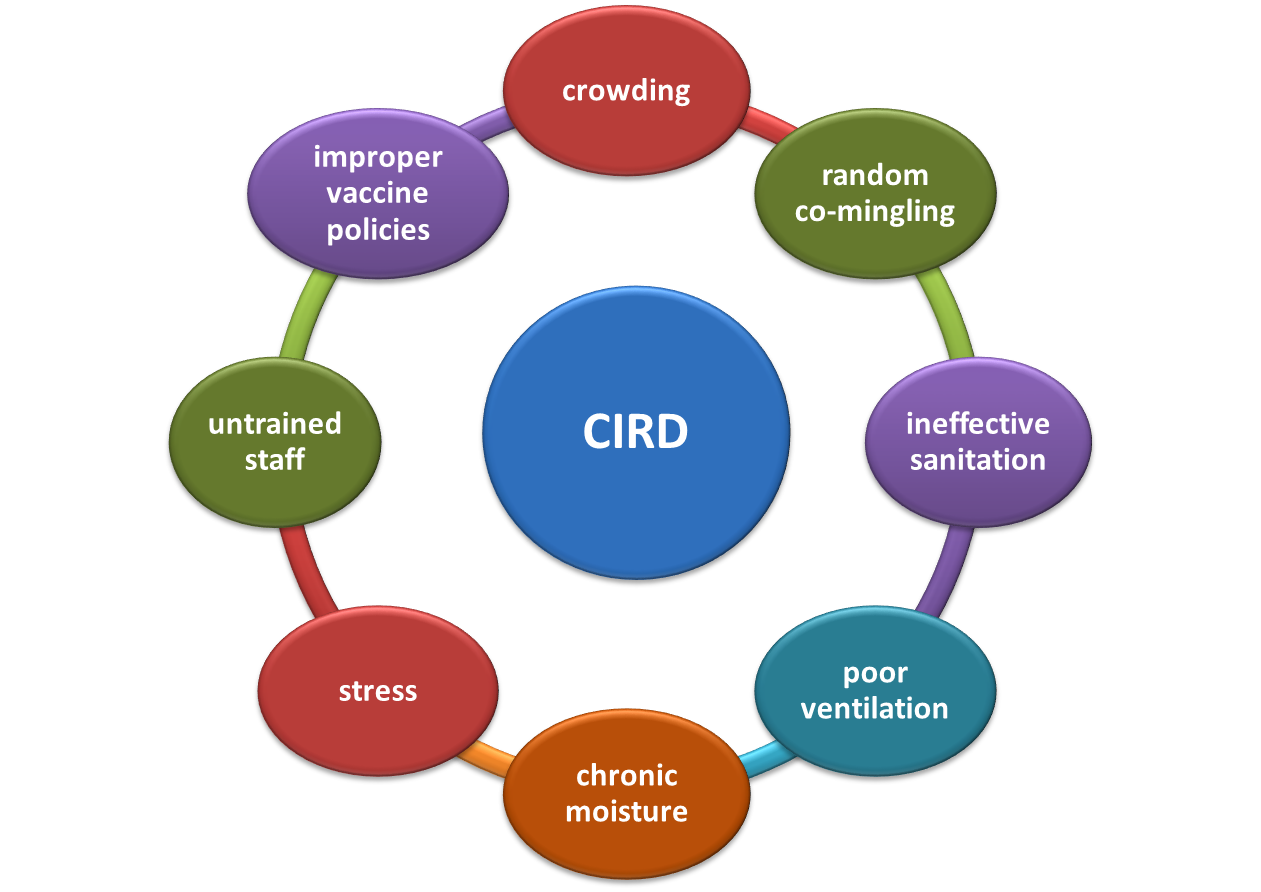Module 4: Healthcare practices for common contagious infectious diseases
Canine Infectious Respiratory Disease
Contagious respiratory infections are the most common cause of illness in dogs in shelters. These infections represent a significant and frequent drain on shelter resources, including treatment costs, staff time, and staff morale. Holding dogs for treatment and recovery adds to the number of animal care days until adoption, which in turn impacts the housing capacity for the shelter and contributes to potential for crowding and more disease spread. Respiratory disease outbreaks frequently result in temporary shelter closures and loss of life, either from the disease itself or euthanasia to stop the spread of disease.
Canine infectious respiratory disease (CIRD) or “kennel cough” is a clinical syndrome characterized by acute onset of sneezing, nasal discharge, coughing, and sometimes pneumonia. The kennel cough syndrome is caused by a variety of viral and bacterial pathogens that infect the mucosal epithelium of the respiratory tract, damaging the tissues to cause the typical clinical signs.
Review the Canine Respiratory Infections in Shelters 2025 document to learn what pathogens cause CIRD, their properties important to diagnosis and management, and the best tools for prevention. Knowledge of these common canine respiratory pathogens is fundamental to successful prevention and management of canine respiratory infections in shelters.
Key Takeaways for Canine Respiratory Infections in Shelters
- CIRD is caused by several respiratory viruses and bacteria.
- Viral pathogens are the more common cause of respiratory infections, and co-infections with multiple viruses occur frequently.
- Some pathogens cause mild and transient disease in low numbers of dogs, while others cause explosive epidemics involving large numbers of dogs.
- Some pathogens cause more serious and progressive disease, including life-threatening pneumonia.
- Pathogen incubation times and shedding times dictate diagnostic and management approaches.
- The incubation period for most of the viruses and bacteria is 7 days or less. An important exception is distemper virus that has a 2-week incubation period.
- Preclinical shedding during the incubation period occurs for all of the respiratory pathogens, meaning infected dogs are contagious before appearance of clinical signs.
- Most of the viral pathogens are shed in respiratory secretions for <14 days. Important exceptions are distemper virus, H3N2 influenza virus, Bordetella bronchiseptica, and Streptococcus zooepidemicus, all of which can be shed for weeks to months.
- The pathogen causing respiratory infections cannot be diagnosed based on clinical signs. The diagnostic test of choice is PCR performed on nasal and pharyngeal swabs.
- Respiratory pathogens are spread by direct contact and by droplets and aerosols generated by sneezing and coughing. This facilitates rapid transmission in the shelter setting.
- Prompt isolation of clinically affected dogs is the single most effective strategy for controlling spread of respiratory infections.
- Vaccination of all dogs at intake with intranasal Bordetella/parainfluenza virus and the DAPP parenteral vaccine is the cornerstone for reducing transmission of several respiratory pathogens.
CIRD Risk Factors
Risk factors for CIRD in shelters are mostly associated with prolonged length of stay and crowding due to ineffective population management practices. Studies have shown that risk for acquiring respiratory infections increases with every day of residence in the shelter. Longer stays in the shelter result in saturating the housing capacity of the facility, crowding of multiple dogs into each kennel, and increased stress for the animals and staff. Crowding decreases ventilation and air quality which contributes to irritated airways, predisposing to colonization by pathogens. Crowding hampers effective cleaning and disinfection procedures, which increases the infectious dose of pathogens in the environment. Staff that are not trained to recognize respiratory infections and follow a plan for prompt isolation of sick dogs from the general population contribute to increased pathogen transmission and infectious dose in the environment.


